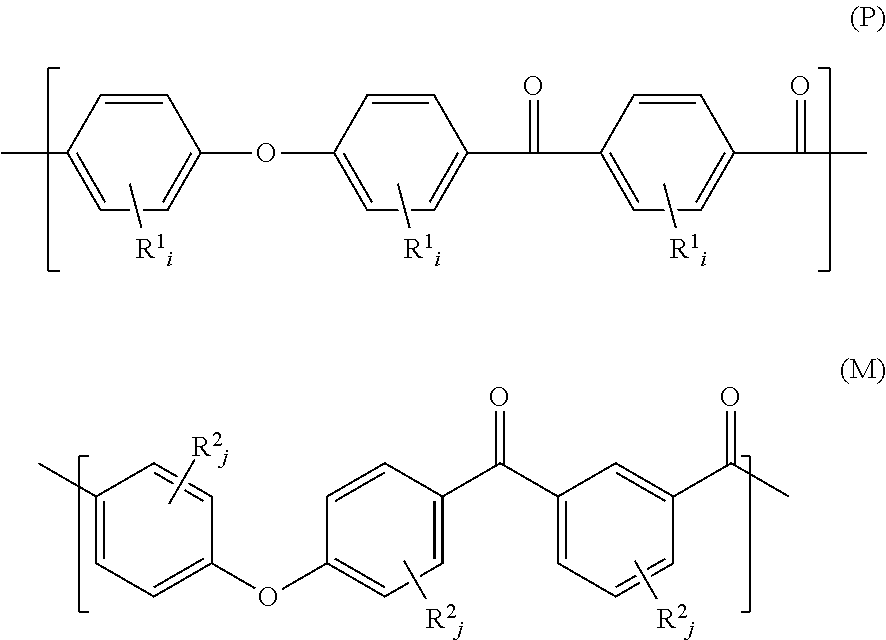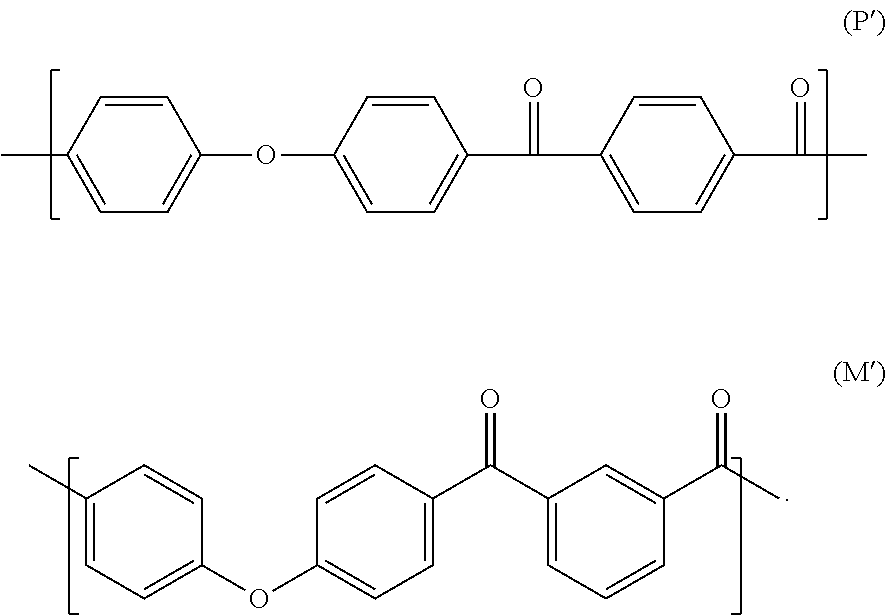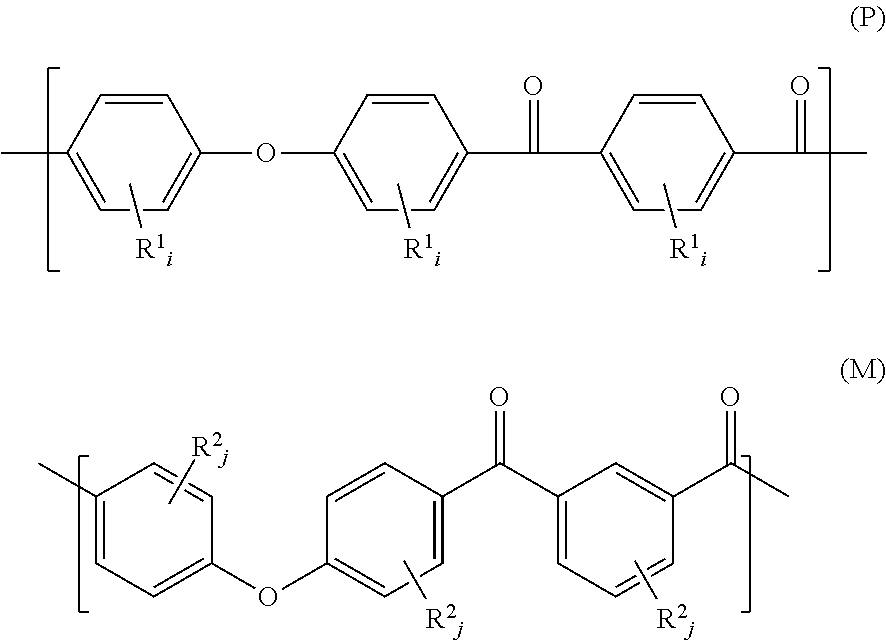Poly(ether ketone ketone) polymer powder having a low volatiles content
a polymer powder and volatiles technology, applied in the direction of additive manufacturing apparatus, etc., can solve the problems of high volatiles (e.g. chlorinated residual solvent) content, limited sls process potential, and pekk polymer produced
- Summary
- Abstract
- Description
- Claims
- Application Information
AI Technical Summary
Benefits of technology
Problems solved by technology
Method used
Image
Examples
example 1
[0155]Raw Materials
[0156]1,2-dichlorobenzene, terephthaloyl chloride, isophthaloyl chloride, 3,5-dichlorobenzoylchloride, aluminum chloride (AlCl3), methanol were purchased from Sigma Aldrich.
[0157]1,4-Bis(4-phenoxybenzoyl)benzene was prepared according to IN patent 193687 (filed on Jun. 21, 1999 and incorporated herein by reference).
[0158]1,4-bis(4′-FB)B: 1,4-bis(4′-fluorobenzoyl)benzene was prepared by Friedel-Crafts acylation of fluorobenzene according to Example 1 of U.S. Pat. No. 5,300,693 to Gilb et al. (filed Nov. 25, 1992 and incorporated herein by reference), purified by recrystallization in chlorobenzene to reach a GC purity of 99.9%.
[0159]1,3-bis(4′-FB)B: 1,3-bis(4′-fluorobenzoyl)benzene was procured from 3B Corp, USA and purified by recrystallization in chlorobenzene to reach a GC purity of 99.9%.
[0160]1,4-bis(4′-HB)B and 1,4-bis(4′-HB)B: 1,4-bis(4′-hydroxybenzoyl)benzene and 1,3-bis(4′-hydroxybenzoyl)benzene were respectively produced by hydrolysis of 1,4-bis(4′-fluorob...
example 2
[0220]Raw Materials
[0221]PEKK #1, PEKK #2 and PEKK #3 from example 1
[0222]Flow agent: Cab-O-Sil© M-5 commercially available from Cabot.
[0223]Mixing with the Flow Agent
[0224]To a 250 mL beaker were added 100.0 g of PEKK #1, PEKK #2 or PEKK #3, and 0.20 g of the flow agent.
[0225]The mixture was stirred for 2 minutes and then poured into a Krups Model F2034251 Coffee Mill and blended for 30 seconds, then again for an additional 30 seconds.
[0226]Results
TABLE 2PEKK#1 (comp) +PEKK#2 (inv) +PEKK#3 (inv) +flow agentflow agentflow agentTd(1%) (° C.)426.7516.5507.4BET (m2 / g)10.1511.0060.527Bulk density0.370.460.46
[0227]The powder of the invention (PEKK #2 and PEKK #3), further comprising 0.2 wt. % of a flow agent, still exhibit:[0228]a lower level of residual volatiles,[0229]a lower porosity, and[0230]a higher bulk density.
example 3
Comparative PEKK #4 (Comparative Example)
[0231]This example demonstrates the preparation of PEKK fine powder from a sample of commercial Kepstan™ 6004 PEKK pellets.
[0232]Kepstan™ 6004 pellets were obtained from Arkema.
[0233]Grinding
[0234]PEKK pellets were slowly fed to the feed port of a Retsch SR200 rotor mill, fitted with a 0.5 mm opening Conidur screen mounted in the reverse flow position and standard 6-blade rotor with a speed of 10,000 rpm.
[0235]The material was then re-fed to the Retsch SR200 with a 0.08 mm screen, also in the reverse flow position with a standard 6-blade rotor at 10,000 rpm.
[0236]Once all the material had been ground through the 0.08 mm grinding screen, it was vacuum oven dried at 120° C. for about 16 hours.
[0237]The powder presents a d0.9-value of 150 μm and d0.5-value of 80 μm.
[0238]The powder was analysed by TGA for Td(1%) (as described in Example 1 above). Results are presented in Table 3 below.
PUM
| Property | Measurement | Unit |
|---|---|---|
| wt. % | aaaaa | aaaaa |
| Tm | aaaaa | aaaaa |
| Tm | aaaaa | aaaaa |
Abstract
Description
Claims
Application Information
 Login to View More
Login to View More - R&D
- Intellectual Property
- Life Sciences
- Materials
- Tech Scout
- Unparalleled Data Quality
- Higher Quality Content
- 60% Fewer Hallucinations
Browse by: Latest US Patents, China's latest patents, Technical Efficacy Thesaurus, Application Domain, Technology Topic, Popular Technical Reports.
© 2025 PatSnap. All rights reserved.Legal|Privacy policy|Modern Slavery Act Transparency Statement|Sitemap|About US| Contact US: help@patsnap.com



